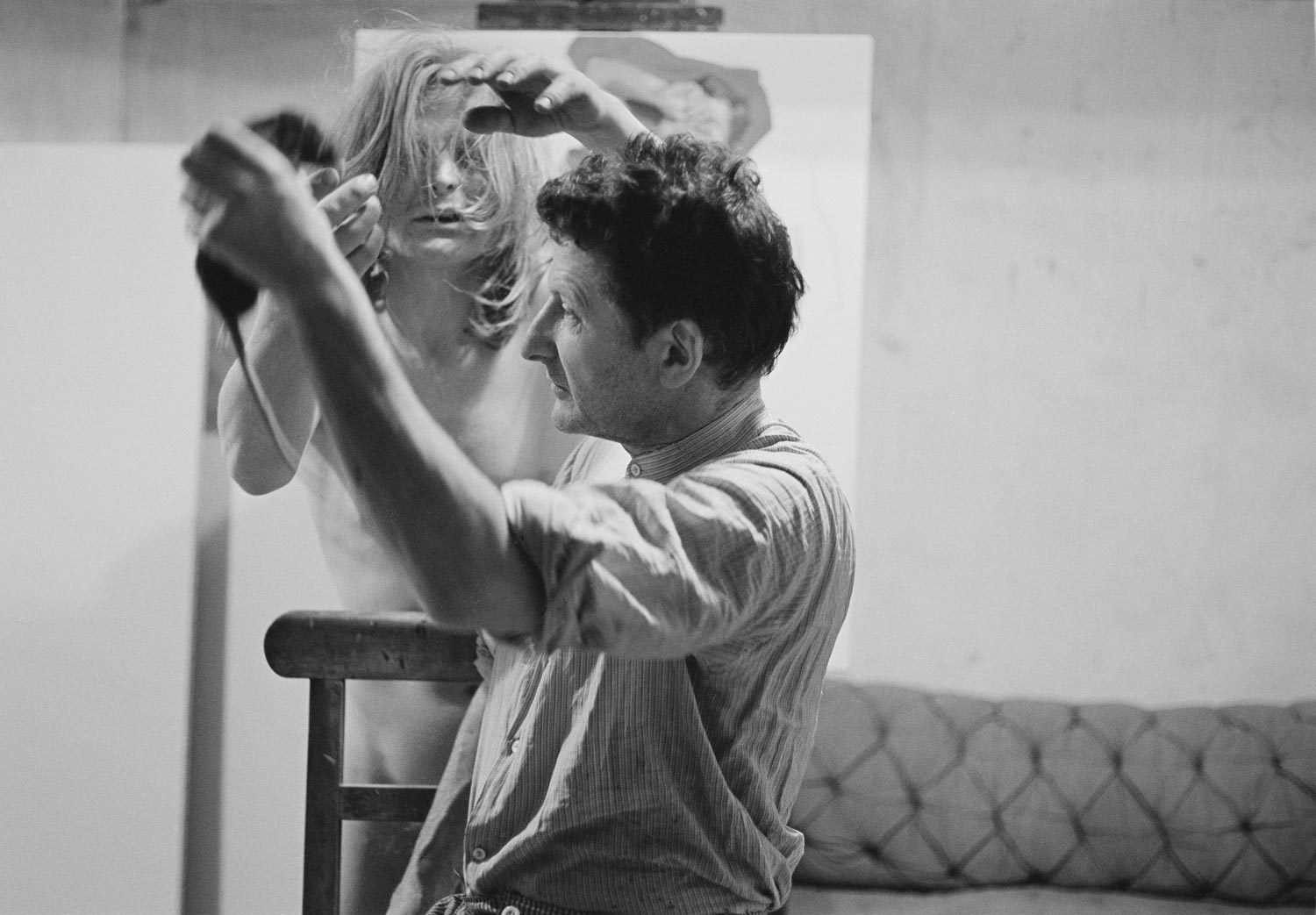For its presentation at the 2021 edition of Paris Photo, London-based England & Co will include a series of works by Rose Boyt, among them a Polaroid of an engagement ring drawn on her finger by Andy Warhol, photographs of her friends and family, nude in the bathroom, and a selection of the photographs she took of her father, Lucian Freud, during one of the sittings for Rose, a nude portrait he painted of her. The following interview was conducted by email.
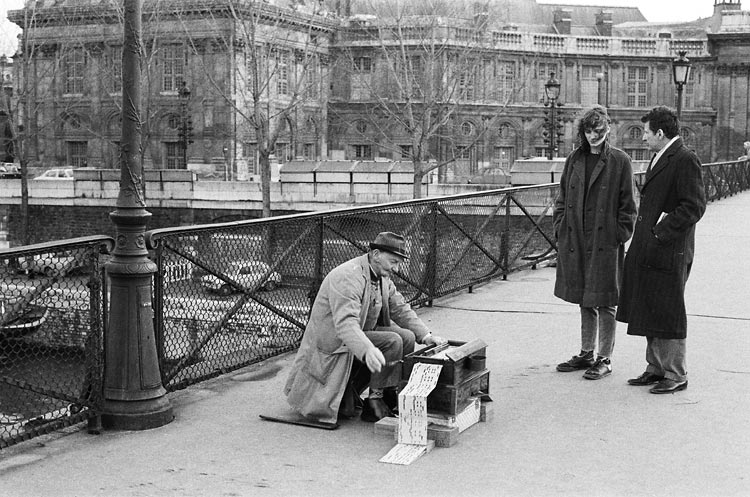
When did you take up photography?
– When I was seventeen and was living in a hostel in Hoxton in London. I felt so amazed by everything in the neighbourhood I had to record what I could before it all slipped through my fingers. I was asked by some of the local families to photograph important events — weddings for example — and in that way had access to scenes I would not otherwise have been privy to. At City and East London College there was a well-equipped darkroom with good supplies of black and white film and photographic paper, and I was the only student who signed up for the photography option. My mother knew two journalists who came back from the Far East with a load of good cameras, one of which was given to me.
The earliest images I have seen by you are from the late ’70s. Generally, how did you use the camera? As a diary? To create series? If series, what were the first ones? Were there certain subjects you were drawn to?
– At first I used the camera to document what I could see, the streets and the people. I was so excited by everything. I was obsessed with the boxer Dave Boy Green and photographed him at a gym in Huntington, Cambridgeshire, his home turf and the place where he trained. I made a series of books about him, my photographs mixed up with cuttings from the sports pages and Boxing News, documenting the progress of his career. I also included tickets from his fights and fight programmes.
Jane England of England & Co told me you were a punk. What did the punk thing mean to you? Did you take photographs of the punk scene?
– I was employed by Harpers and Queen to take pictures of Polystyrene for their teenage issue, which I think was my first proper job. I was a big fan of X-Ray Spex and adored Poly. For my bath series I photographed Steve from the band, as well as other stars of the scene at the time- Debbie Wilson, one of my best friends, who used to go out with Johnny Rotten, the musician Rhoda Dakar and Paul Cook, drummer of the Sex Pistols, amongst others.
I was at the Notting Hill Carnival in 1977 with my camera and took pictures of punk women in the crowds and that same year photographed my sister Bella jumping around in a full bondage suit from Seditionaries, the shop in the King’s Road run by Vivienne Westwood and Malcolm McLaren, where she worked full-time and I was a Saturday girl. We all used photo-booths to record the new looks we came up with before going out, and I have a small collection of these pictures, some of me and Bella, the resemblance between us surprising- at the time I didn’t feel we looked at all alike.
Can you tell me about your meeting with Andy Warhol, how it came about, your impressions of him, his proposal, the ring, and the self-portrait? Did you take portraits of him?
– I went to New York when I was nineteen and made a book of photographs as an archive of my trip, my own pictures accompanied by various tourist maps, postcards and other ephemera. I didn’t take any pictures of Andy Warhol but he had me photographed for Interview magazine. I don’t think the pictures were published- I remember feeling very awkward and had no idea how to perform. I met him through a friend of my father’s, Catherine Guinness, who invited me to lunch at the Factory in New York. Diana Vreeland was there. I have no memory of the food – I don’t think nourishment was high on the agenda for anybody.
Andy took me to Studio 54 and introduced me to the door staff so I could get in any time I wanted to party. Out of the blue he asked me to marry him, a proposal both of us knew would not lead to anything, although I was pleased to receive his seal of approval. He didn’t seem very interested in sex, not with me anyway- I felt safe around him. He drew an engagement ring on my finger and signed it. I went straight to the World Trade Center and photographed myself in the Polaroid booth at the top, holding up my hand to show the ring, preserving it for posterity before it washed off.
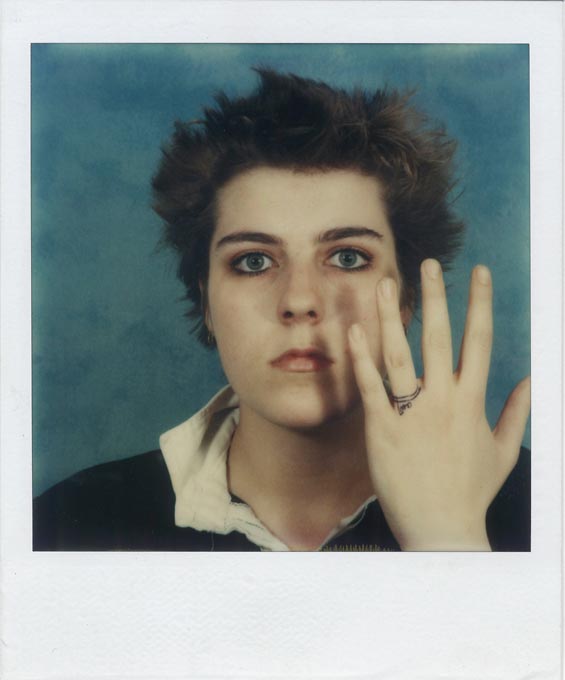
You mentioned the Bath series. How did it come about? They’re intimate pictures. Was there an element of dare in them? Or simply fun? Did anyone turn you down? Were the photographs exhibited at the time?
– The bath photos came about because I wanted to capture my friends and family, to document everybody, and at that time fashion was so important it seemed that nakedness was the only way for me to proceed. I was looking for a context in which people might be naked that was not about sex- the bedroom was out of the question for that reason- the bath seemed the most natural environment.
Everybody was happy to be involved. It was fun, but not about fun. The intimacy was easy, because we were all close and nobody was subjected to any type of coercion or disrespect. I think because I was a teenage girl the work was divested of any potential threat. None of us read any transgression into what I was doing. Nobody felt used.
The photographs were not exhibited at the time. I didn’t even try, because my father had brainwashed me to believe that photographs were ephemeral and should not be shown in a gallery as if they were art. I did try to get them published as a book, my preferred option, but no luck.
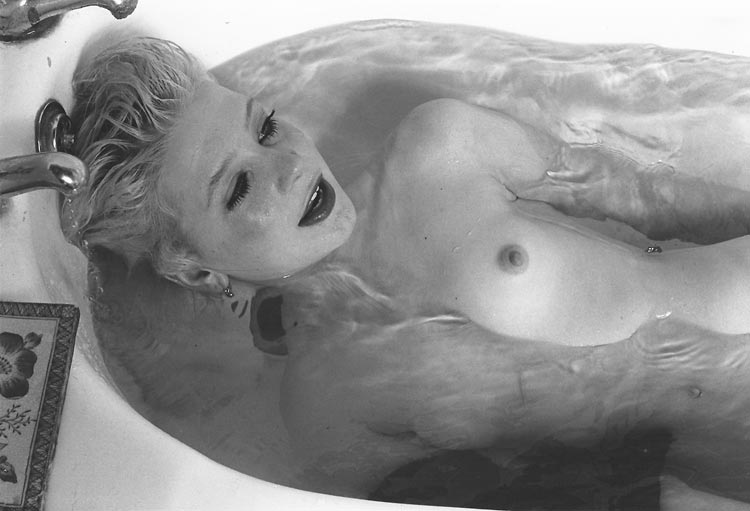
In 1977 – 78, you posed nude for a portrait by your father, Lucian Freud, and you also took a series of photographs of him in his studio. He was painting Raymond Jones at the same time. His portrait of you, Rose, has caused much debate over the years. How do you feel about the painting now? And why did you decide to take the photographs?
– Anthony d’Offay commissioned me to take some photographs of my father – he was arranging an exhibition and wanted a portrait for the catalogue, something to display in a frame on a small easel in the window of the gallery in Dering Street.
I turned up at the studio and Raymond was already there, naked and larking around with his pet rat. I knew Anthony would not be happy with any of the photos and in the end persuaded Dad to sit down on his own and allow me to immortalise him. He didn’t like to be photographed, but submitted to the process with good grace.
You can see the naked portrait of me taking shape on the easel in the background of some of the pictures. The pose occurred naturally, I didn’t want to look submissive. The painting took a year and half, three sittings a week, often all night. I am very proud of this work and do not regret in any way having sat for it. It was an education for me, and through talking to my father about writing my interest in literature was ignited. Obviously I am aware of how the work might be received, particularly now – shock horror artist grandson of sex-mad psychoanalyst makes naked portrait of teenage daughter – but my integrity remains intact in the portrait and I was not damaged.
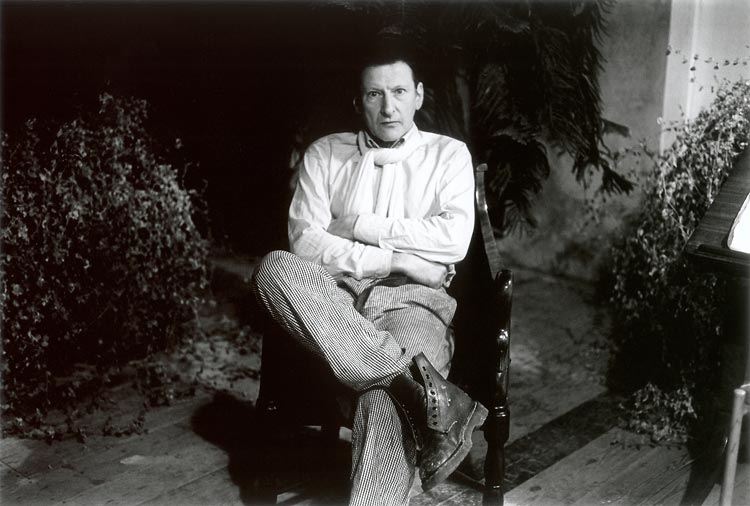
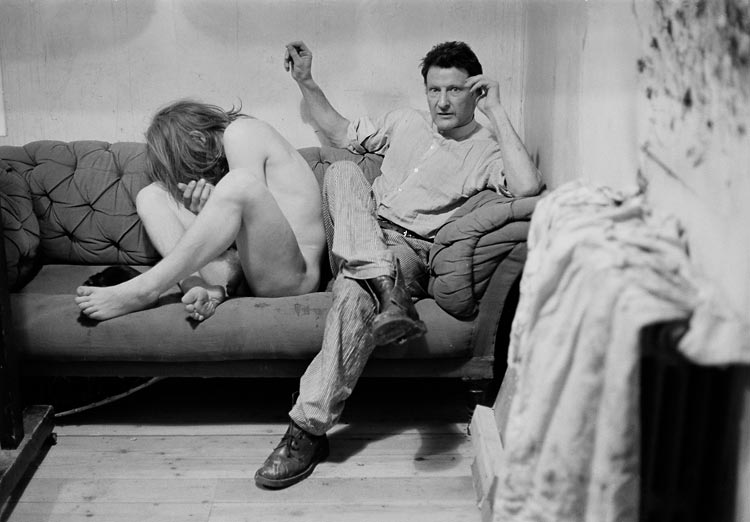
Are you still taking photographs?
– I use my phone now to take pictures every day when I am out and about, particularly of discarded items. I post the images on Instagram, telling a story without words of how my world goes round.
My latest project is called LILY, EILLEN, DONNA, ROSIE AND FLORENCE. I shot on colour film, hoping for the richness of memory in my pictures, and miraculously managed to find what I was looking for. Five generations of one family pictured together in a domestic interior in Hackney, East London. Rosie is my god-daughter, and Florence her baby. I met Eileen when I was living in Hoxton as a teenager, and we have remained friends. Lily is her mum, still playing darts in her local pub team in her nineties. I decided to take these pictures after the death of my own mother. I had lost her, and wanted to capture Lily and her descendants before it was too late.
